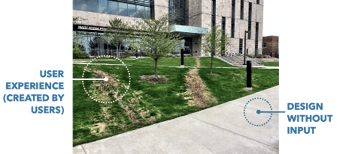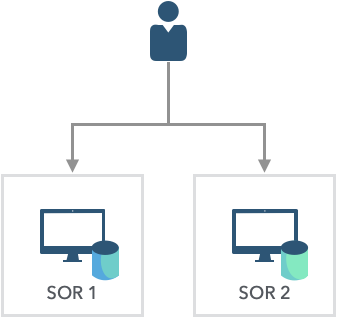Insights
Is Your Organization Nurturing or Suppressing Innovative Ideas and Creative Individuals?

How often have you heard someone—a student, an employee—say that they’re not very creative, or worse, that they’re not right-brained oriented? I would argue that most of us are creative without being cognizant of our own creative tendencies. Why? In a recent study, researchers found that jazz musicians engaged in improvisation using the same brain regions to process their on-the-fly compositions as we use to process everyday spoken language (Donnay, et al., 2014). What this means is that when we are engaged in a conversation, we are out of necessity creating new, extemporaneous phrases, sentences, or paragraphs which have, most likely, never been spoken before. We are producing something novel and useful…aligning with the conventional definition of “creativity.”
If, indeed, most of us are creative, then why do we seem to see a decline in creativity? Some have called it a crisis. Sir Ken Robinson and others have been critical of our school systems, claiming that our K-12 institutions are stifling rather than nurturing creativity. Others have found evidence in the workplace of a bias against creative ideas and creative individuals when the introduction of an innovative idea was perceived as uncertain, referred to as "uncertainty avoidance" (Mueller, Melwani, & Goncalo, 2012). The crisis has produced boatloads of blogs and books purporting to cultivate creativity in individuals and guide employers in facilitating work environments that nurture creativity.
But what’s going on? S. Giora Shoham has suggested that creative innovation is stigmatized by members of society, stating that “a medium of innovation is acceptable, but too much tends to be rejected, and its creators are liable to be labeled deviant or mad” (Shoham, 2003, p. 2). Indeed, research findings indicate that creative individuals are viewed as deviant (Wells, et al., 2006); in group decision-making, group members dislike deviant members and rate morale lower despite increased innovation and creativity (Rijnbout & McKimmie, 2012); and those who are exposed to it often view it with suspicion or outright hostility (Klein & Sorra, 1996; Ram & Sheth; 1989) as a function of innovation resistance (Adarves-Yorno et al., 2008).
In a forthcoming book, Bernard Nijstad suggests, and I agree, that “all creative endeavors take place within a social system: Creative people contribute something new to a particular domain, and the quality of their contribution is judged by the other people who operate in the same field” (Nijstad, 2015). The componential theory of creativity (Amabile, 1983, 1988, 1996) suggests three internal components in the process for the individual, 1) domain-relevant skills, 2) creativity-relevant processes, and 3) intrinsic task motivations, and one external component, the social environment. I would like to suggest that many of us suppress our creative tendencies. Such suppression of creativity is the result of our internal components, especially creativity-relevant processes, being influenced by the external component, i.e., the social environment. The function of such suppression is an adaptive behavior. Adaptive behavior is defined as the “effectiveness and degree to which an individual meets social/cultural standards of personal independence and social responsibility” (Gresham & Elliott, 1987, p. 167).
A number of instruments have been developed to measure individuals’ creative attributions. While these instruments have been integral in measuring creative attributions, nearly twenty years ago the call went out for a systems approach to creativity, one that includes social influences on creativity, which had largely been ignored in favor of the attributional approach (Amabile, 1995). A social-cognitive approach provides a theoretical framework to explore the social influences on divergent and convergent thinking. Based on the hypothesis that individuals non-consciously suppress their creative tendencies out of the fear that they will be perceived as atypical, abnormal, or deviant, (i.e., an adaptive mechanism), I am developing a scale to measure the extent to which individuals suppress their creative expression. Such a scale would be beneficial for at least two reasons: 1) Educators and employers could identify latent creative tendencies among students and employees, and provide resources and enhanced environments to encourage more creative expression, and 2) the results of conventional scales of creativity and intelligence may be skewed because of individuals’ suppression the characteristic. A suppression of creativity scale would provide a measure of concurrent validity for conventional tests.
Creativity is context-dependent. It is influenced by and influences social and cultural values and perceptions. Ludwig (1992) noted the profound effect that culture exerts on creative expression, claiming, “not only does [culture] influence what is expressed, but it also determines by whom it is expressed, how it is expressed, and what functions this expression serves. But that is not the whole story. Despite the prospects of negative consequences, certain individuals continue to thwart tradition or rebel against constraints, indicating that creative expression often represents a complex interaction between man and his environment” (Ludwig, 1992, p. 454). Individuals, therefore, are influenced by the sociocultural definitions and acceptance or vilification of creative individuals, creative activities, and innovative products. It would be, therefore, beneficial to assess the extent to which individuals are suppressing their creative tendencies so that we can create classroom and workplace environments more conducive to creative expression and innovative thought.
References
Adarves-Yorno, I., Haslam, S., & Postmes, T. (2008). And now for something completely different? The impact of group membership on perceptions of creativity. Social Influence, 3, 248-266.
Amabile, T. (1995). Attributions of creativity: What are the consequences? Creativity Research Journal, 8, 423-426.
Amabile, T., Barsade, S., Mueller, J., & Staw, B. (2005). Affect and creativity at work. Administrative Science Quarterly, 50, 367–403.
Amabile, T. M., Mueller, J. S. (2007). Studying creativity, its processes, and its antecedents: An exploration of the componential theory of creativity. Handbook of Organizational Creativity. Eds. Jing Zhou and Christina Shalley.
Donnay, G., Rankin, S., Lopez-Gonzalez, M., Jiradejvong, P., & Limb, C. (2014). Neural substrates of interactive musical improvisation: An fMRI study of ‘Trading Fours’ in jazz. PLoS ONE, 9: e88665 DOI: 10.1371/journal.pone.0088665.
Gresham, F, & Elliott, S. (1987). The relationship between adaptive behavior and social skills: Issues in definition and assessment. Journal of Special Education, 21, 167-181. doi:10.1177/002246698702100115.
Klein, K., & Sorra, J. (1996). The challenge of innovation implementation. The Academy of Management Review, 21, 1055–1080.
Ludwig, A. (1992). Creative achievement and psychopathology: Comparison among professions. American Journal of Psychotherapy, 46, 330–356.
Mueller, J., Melwani, S., Goncalo, J. (2012). The bias against creativity: Why people desire yet reject creative ideas. Psychological Science, 21, 13-17.
Nijstad, B. (2015). Creativity in groups. APA handbook of personality and social psychology, Volume 2: Group processes [e-book]. Washington, DC, US: American Psychological Association; 35-65. Available from: PsycINFO, Ipswich, MA.
Ram, S., & Sheth, J. (1989). Consumer resistance to innovations: The marketing problem and its solutions. Journal of Consumer Marketing, 6, 5–14.
Rijnbout, J., & McKimmie, B. (2012). Deviance in group decision making: Group-member centrality alleviates negative consequences for the group. European Journal of Social Psychology, 42, 915-923. doi:10.1002/ejsp.1917.
Shoham, S. (2003). Art, Crime, and Madness. Portland, OR: Sussex Academic Press.
Wells, D., Donnell, A., Thomas, A., Mills, M. & Miller, M. (2006). Creative deviance: A study of the relationship between creative behavior and the social construct of deviance. College Student Journal, 40, 74-77.
Written by: Scott R. Furtwengler, PhD, UX Researcher | Educational Psychologist at ChaiOne
Originally featured on LinkedIn
About ChaiOne
ChaiOne is a pioneer in industrial digitalization. Reimagining plant, field, supply chain processes with design thinking led solutions that reduce cost, increase adoption and elevate the customer experience. The complete strategy-to-solution expertise sets ChaiOne apart to help industrial customers achieve exponential outcomes across their logistics, supply chain, field, and plant operations. To learn more, please visit www.chaione.com.



